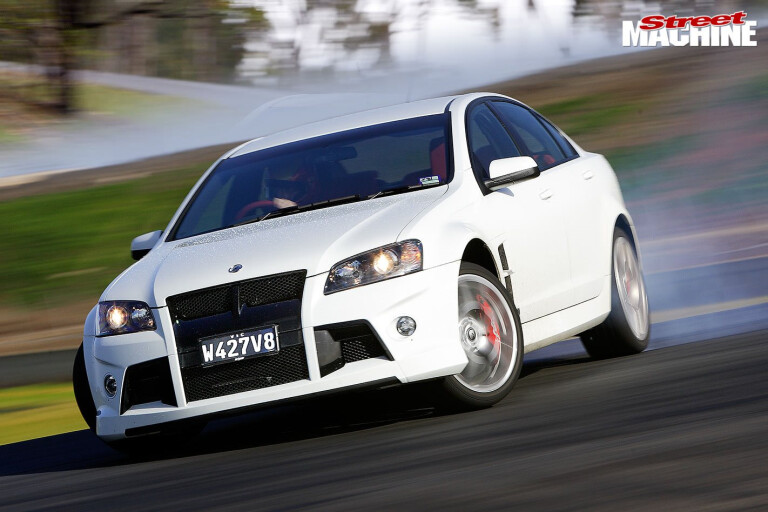
It's been 14 years since HSV pulled the covers off its VE HSV W427. First revealed at the Melbourne Motor Show in 2008, the W427 show car was painted in Panorama Silver as a nod to HSV’s first effort, the 1988 VL Commodore SS Group A SV, nicknamed Walkinshaw after HSV’s part-owner, racing legend Tom Walkinshaw.
The W427 came about to help celebrate HSV’s 20th birthday, and boasted the largest engine ever sold in an Aussie production car.
This article on the W427 was first published in Street Machine's LSX Tuner #8 magazine, 2018

That show car was a sneak peek of things to come, and a bold statement of the capabilities of HSV, with the W427 carrying an exclusive engine: the 7.0-litre, 375kW LS7 developed for the hardcore C6 Z06 Corvette.
Following the end of car manufacturing in Australia, prices are skyrocketing for limited-edition HSV models, and the W427 is among the most desirable.
BEHIND THE SCENES

The VE’s Zeta platform was engineered from the ground up to cope with big power. Those with a keen interest in the detail of car design will recognise what Holden’s designers and engineers did: the almost symmetrical floorpan that easily accepts a V8’s big dual exhaust; the bigger-than-before wheel studs to cope with fat torque; the layout of the suspension; even the way the engine is fed cold air from a cleverly integrated cold-air intake. They are all characteristics of a car designed to be a world-class performance sedan.

Sure, it’s all a bit techy, but all these little details allowed the VE to host a lot more horsepower than previous Holden sedans, and when GM announced the monster-mumbo Corvette Z06 with its all-alloy, dry sump, 7.0-litre (427-cube!) circuit-influenced monster LS7 V8 packing 375kW (500hp in the old money), the team at HSV took notice.
HSV’s chief engineer for the W427 development was Joel Stoddart, and he fondly remembers his involvement.

While it’s not known for being subtle, HSV hasn’t built too many totally over-the-top cars – the 1996 VS GTSR is probably the best-known exception – so thankfully the W427 carried on the tradition of a wolf in sheep’s clothing
“Those sorts of things [such as the LS7 engine] come up on the radar,” he begins. “And when that happens you begin thinking: ‘How can we package this into our car?’ At the introduction of the VE, most of the drivetrain was at its limit, so we were kind of pushing the limits with the LS7 from a power and torque capacity point of view.
“With programs such as W427, there are a few pieces of the puzzle that you have to get into place before you hit the go button.”

For instance, the capabilities of the gearbox and diff had to be assessed. “The TR6060 transmission had just become available to HSV,” explains Joel. “It was good for us because it had a wider gearset and more durability, so the peak torque capacity matched the requirements of the LS7.
“Then we had to look further. The tailshaft and half-shafts were okay for strength and durability, but we had to do something with the diff. So we took it out and had it shot-peened so it completed our durability tests.”
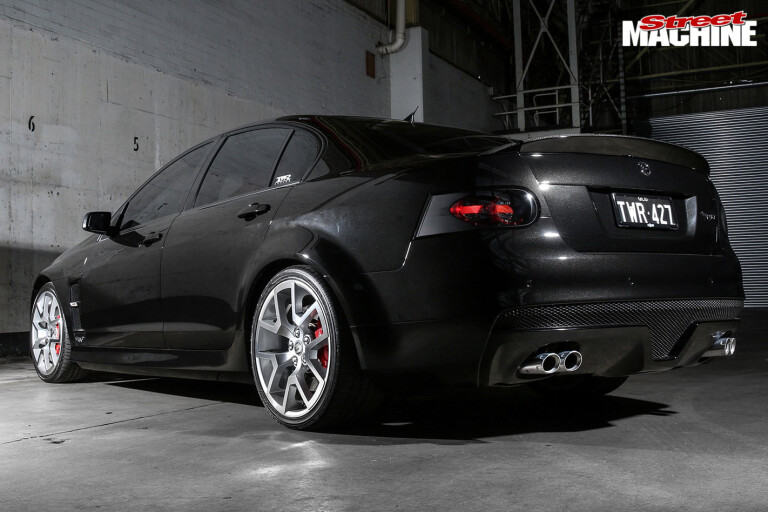
The gearbox installation required a new clutch-actuating mechanism, too, and other important stuff such as the over-radiator intake and the oil reservoir for the dry sump system had to be designed, then tested, then the manufacturing organised, and the assembly process devised.
After the question of whether the W427 could be built was answered, the testing and development progressed, and Joel remembers four LS7-powered prototype cars. Like all HSV and Holden V8 models, the LS7 was imported completely built-up, so not only was Joel and his team’s responsibility to package the 427-cube small-block in the VE body, but to trick and tweak the other systems around it to create the superlative performance car the W427 is regarded as.
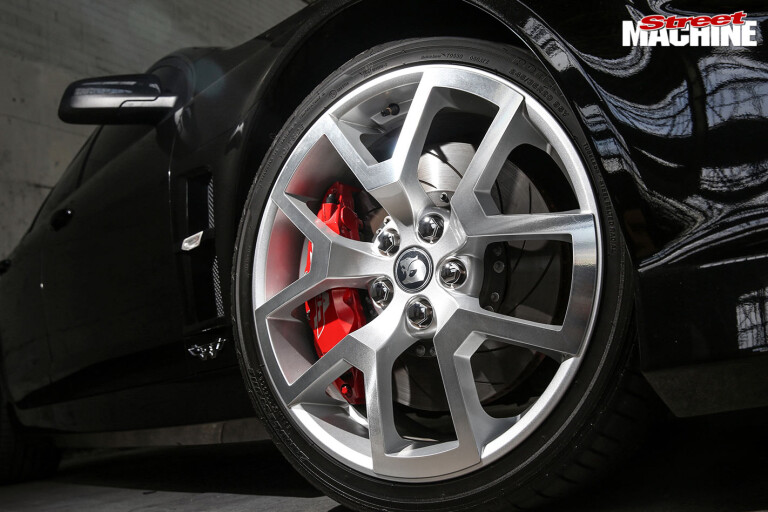
Being a US-market mill, the engine had to be calibrated to Australia’s Euro-based emissions specs, and performance and customer satisfaction targets had to be met. The most important of these was braking and handling.
HSV has always placed special emphasis on brakes and handling, and the GTS model’s 365-millimetre rotors and six-piston calipers were the kick-off point for the W427 program. The rotors ended up being replaced by 380mm by 35mm-thick discs and six-piston calipers that clamped pads 50-percent larger than the GTS model for better bite, fade resistance and life.

The suspension tune was finalised with stiffer front springs, harder sway-bar bushes, and a tweak with the GTS’s MRC (Magnetic Ride Control) adjustable damping. The calibration and sensitivity of the stability and traction control systems were modified, and a 20mm nose drop gave the W427 a bit of extra aesthetic swagger.
“I remember thinking at the time that it was a beast,” says Joel. “A 7.0-litre, 375-kilowatt car! We will never top this! We’ve taken everything to its maximum, and this is the limit. Then, not much later, the 430kW LSA in the Camaro ZL1 gave us the opportunity to go even further!”
But that, folks, is a story for another day.

DRIVING ONE
When the covers came off the Panorama Silver show car at the Melbourne Motor Show, HSV spruiked that no more than 427 of its 7.0-litre special-build GTS-based sedans would be built. That number was pulled back to 200 depending on orders, and interested parties were encouraged to get their orders in.
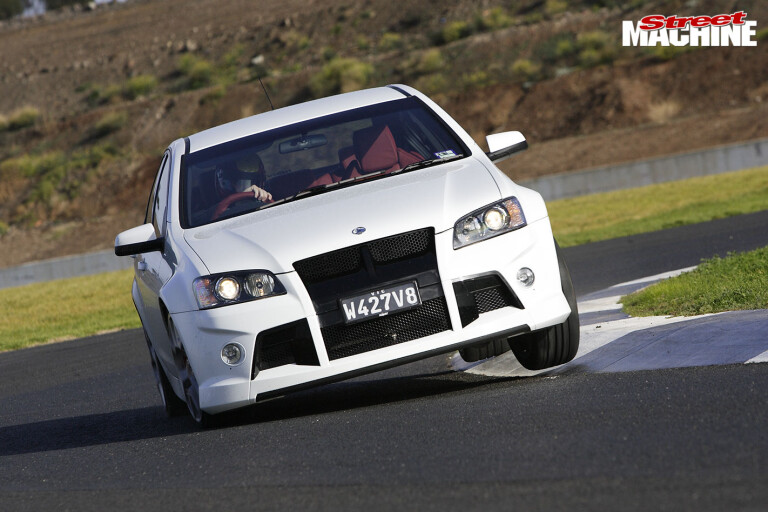
Production began in winter 2008, just as the GFC hit, and the order book closed in April 2009. The final production number was just 137, adding to the allure of the W427 with rarity as well as mind-stretching on-road capabilities.
Owner Justin Ellis bought his from a fellow HSV freak a few years ago. Justin has owned several HSVs and fast Holdens, and is lucky enough to have a couple more stashed in the shed right now. But the W427 is his ultimate.
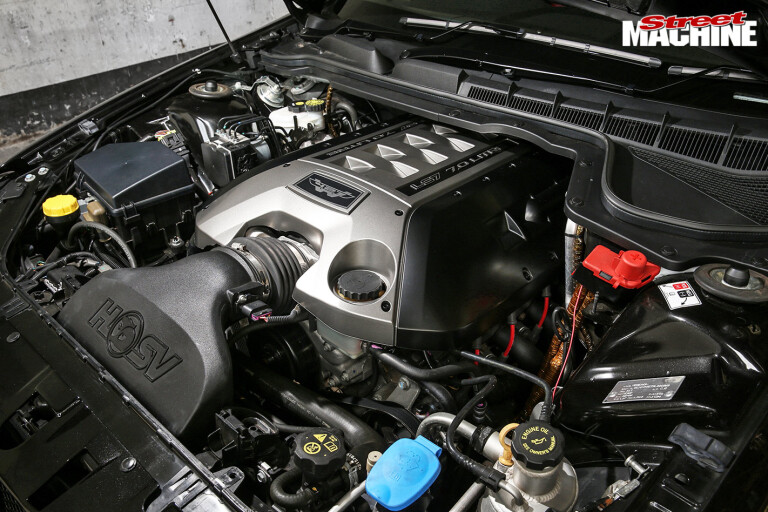
“They are absolutely awesome,” he says. “They just feel like a pure race car, like nothing else. The balance is phenomenal. I’ve had some other stuff, including a tuned Gen-F GTS, and the first time I drove one I had one of those lightbulb moments where I realised I must have one of these!
“That LS7 is sensational. The torque of that engine just pulls so hard all the way through every gear. It’s difficult to describe the sheer willingness of how it goes right to the cut-out. There are other things as well: the black with red interior makes it feel really special to drive, too.”
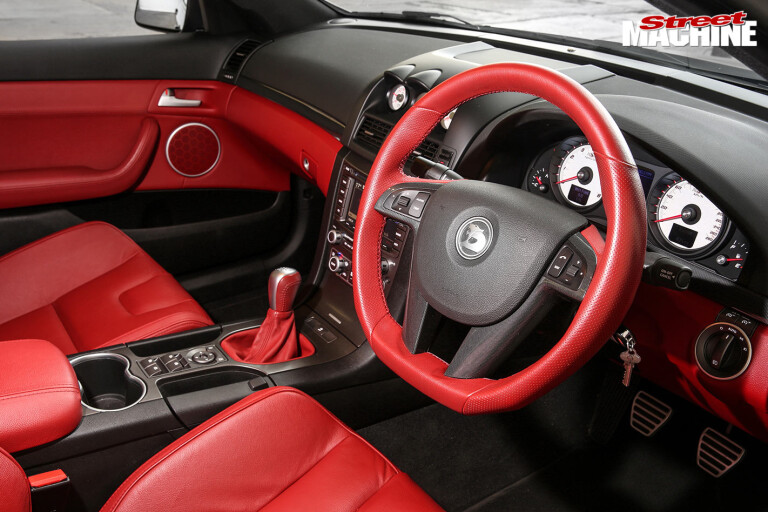
Justin reckons his money is safe. “Honestly, I reckon this will be one of the HSV models to have later on,” he says. “If you think of the big bangers, over time they are the ones that become legends. I think of the W427 and the GTS-R W1 being in the same realm as the XW to XY GTHOs.”
But there is a downside to owing a special car such as this.
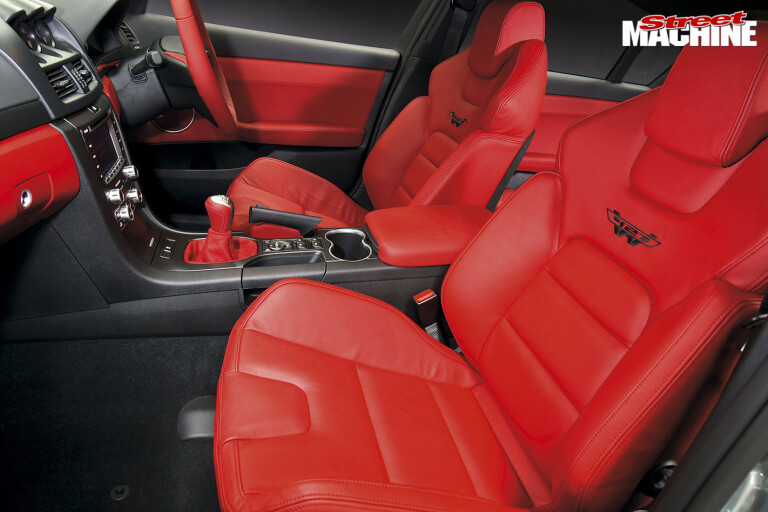
Inside the W427 there were the brightest red seats you have ever seen, with the same Red Hot highlights on the doors, steering wheel, shifter, and the lower section of the dash
“In the two years I’ve owned it I’ve only driven it five times,” Justin laments. “I want to drive it more, but I don’t. It is a collector piece where low kays matter, and this is one that was built with all the options, such as a sunroof, sat-nav and DVD player, so the fear of damage is real!
“There are parts on it that are difficult to replace: the carbonfibre rear spoiler and the air filter. If I damage it I’m in the shit!”
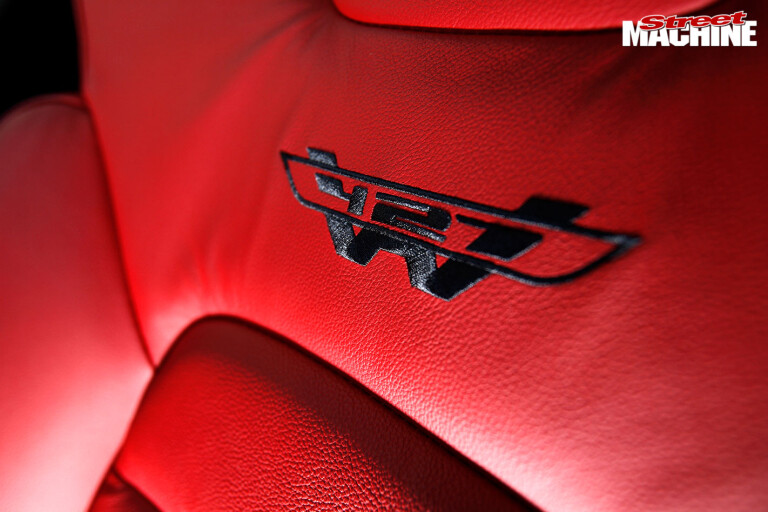
Today, you’re looking at needing over $100,000 to even think about the most beaten-up W427 build, with cherry examples needing double that to be taken off the owner’s hands.

The HSV E Series had been on sale for just over a year after the VE Commodore on which it was based was launched in mid-2006. With development complete and the cars selling nicely, the W427 show car was right on target to keep people talking – and buyers queuing
LINE TAMER
HSV production cars were built on core vehicles specially built by Holden. These core cars usually wore plain black plastic bumpers and sill panels, and had dummy steel wheels, all to be later replaced with HSV’s own components. This apparent double-handling seemed like a bit of a waste, but it was essential to keep Holden’s production line humming along.
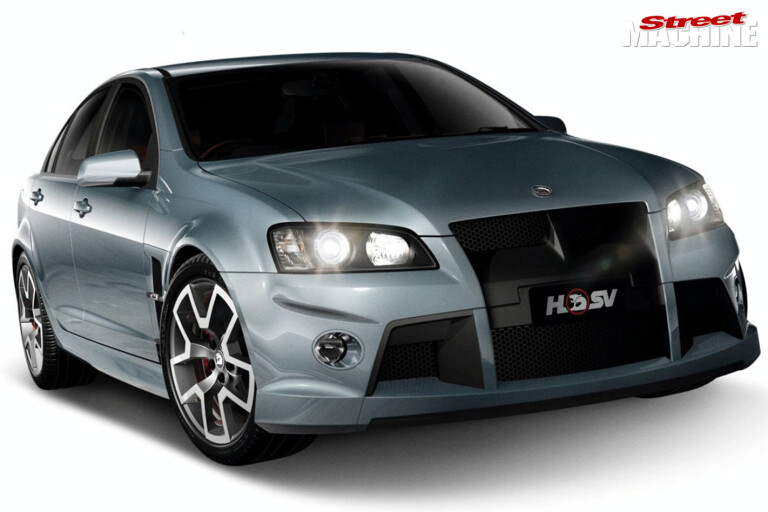
One W427 forerunner was built on the Holden production line with a wet sump version of the 7.0-litre engine. That proved that with the W427’s special hardware such as the dry sump and oil reservoir, oil cooler and over-radiator intake, production W427s would best have their drivelines installed at HSV in Melbourne. The core cars were hoisted, the front crossmember dropped, the 6.2-litre manual driveline removed and the 7.0-litre engine installed with its oil lines and other special hardware.

COMMENTS